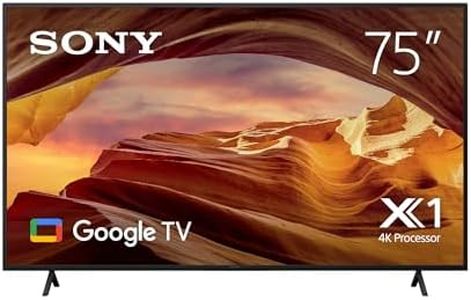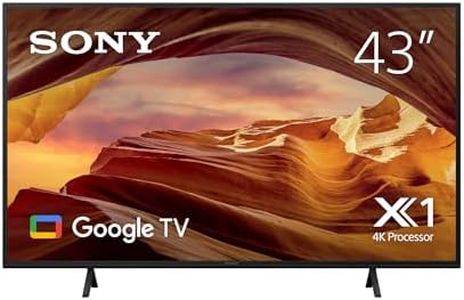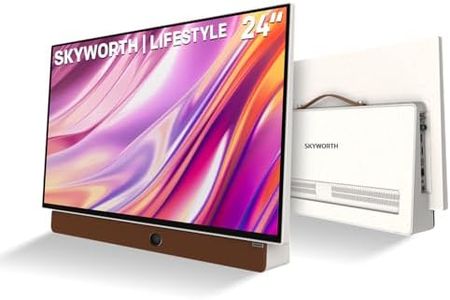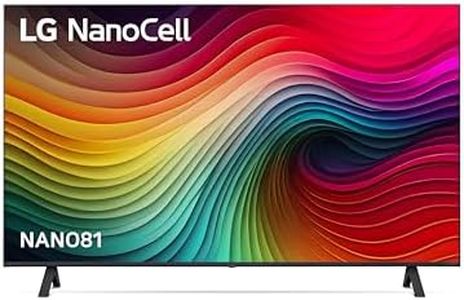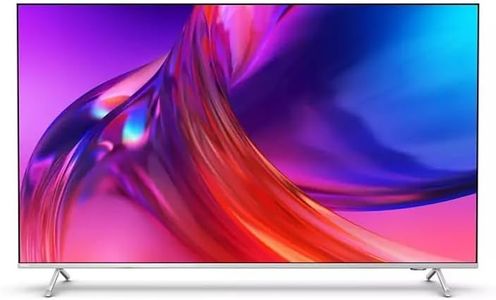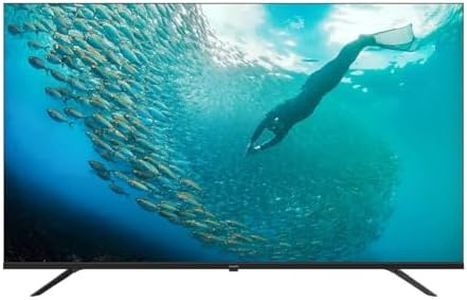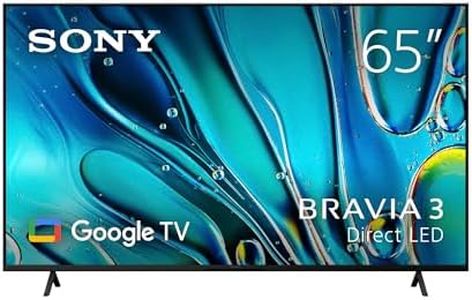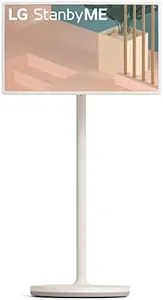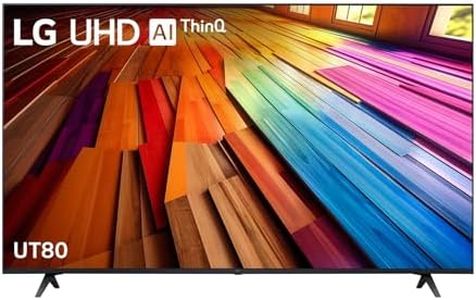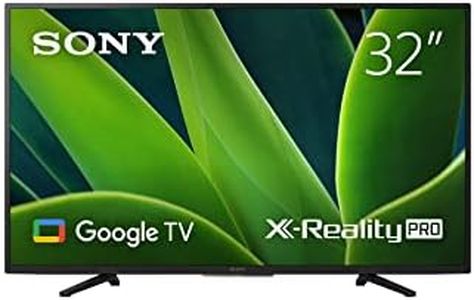We Use CookiesWe use cookies to enhance the security, performance,
functionality and for analytical and promotional activities. By continuing to browse this site you
are agreeing to our privacy policy
10 Best Tvs
From leading brands and best sellers available on the web.Buying Guide for the Best Tvs
Choosing the right TV can feel overwhelming with so many options out there. The best approach is to think about where you'll put the TV, how you'll use it (like watching movies, sports, gaming), and what's most important for your own viewing enjoyment. Understanding the main specs and features helps you pick one that fits your space, habits, and expectations for picture quality.Screen SizeScreen size refers to the diagonal length of the TV display, usually measured in inches. It's important because the size of your TV affects both your viewing experience and how the TV fits in your room. TVs generally range from small (under 40 inches) for kitchens or bedrooms, medium (40-65 inches) for most living rooms, to large (over 65 inches) for a home cinema experience. The right size depends on your room size and how far you'll sit from the TV—a closer seating distance suits a smaller screen, while a bigger room or home theater might need a larger screen to maintain an immersive effect.
ResolutionResolution tells you how many pixels are used to create the picture. More pixels usually mean sharper and clearer images. Common resolutions are Full HD (1920x1080), 4K (3840x2160), and 8K (7680x4320). Full HD works fine for smaller TVs or casual viewing, 4K is now standard and ideal for most users, providing great detail even on large screens, while 8K is for those who want the absolute cutting edge, though there is limited content available. Choose the resolution that matches your viewing distance and the types of content you watch—if you sit close to a big screen, higher resolution is more noticeable.
Panel Technology (LED, OLED, QLED)Panel technology describes how the screen creates images. LED TVs use regular backlighting, QLED uses advanced materials for brighter colors, and OLED provides self-lit pixels for deeper blacks and superior contrast. LED is common, affordable, and offers good brightness, QLED is brighter and more vibrant (good for bright rooms), while OLED is best for deep blacks, fast motion, and wide viewing angles, ideal for movie lovers or dark rooms. Your choice here depends on your rooms' lighting, what you watch (sports, movies, games), and how fussy you are about picture quality.
Refresh RateRefresh rate, measured in Hertz (Hz), tells you how many times per second the TV updates its picture. Standard rates are 60Hz and 120Hz. A higher refresh rate makes motion look smoother, which is noticeable in fast action (like sports or games). For regular TV and movies, 60Hz is usually enough, but if you love action content or are into gaming, 120Hz can make the experience smoother and more enjoyable.
Smart TV FeaturesSmart TV features refer to the TV’s ability to connect to the internet and run apps like Netflix, YouTube, or music services. Basic models offer standard apps and streaming, while more advanced models have voice assistants, better app libraries, and smoother operation. Think about what you want to watch and how you interact with your TV—if you like streaming or want advanced control, a robust smart platform will suit you better.
ConnectivityConnectivity means the types and number of ports available for plugging in devices like soundbars, game consoles, and streaming boxes. Common ports include HDMI, USB, and audio outputs. More HDMI ports are handy if you use several devices, while specific outputs like eARC can help with audio systems. Consider the devices you plan to connect and make sure the TV has enough and the right kinds of ports for your needs.
Audio QualityAudio quality refers to how good the TV sounds on its own. While built-in speakers have improved, they're often limited compared to separate sound systems. Some TVs emphasize better speakers or features like Dolby Atmos for more immersive sound. If you care a lot about sound or plan to watch movies and sports, either focus on good built-in audio or ensure your TV connects easily to an external speaker system.
